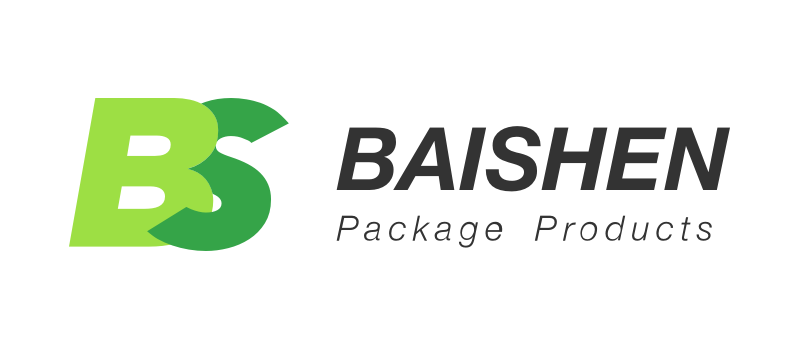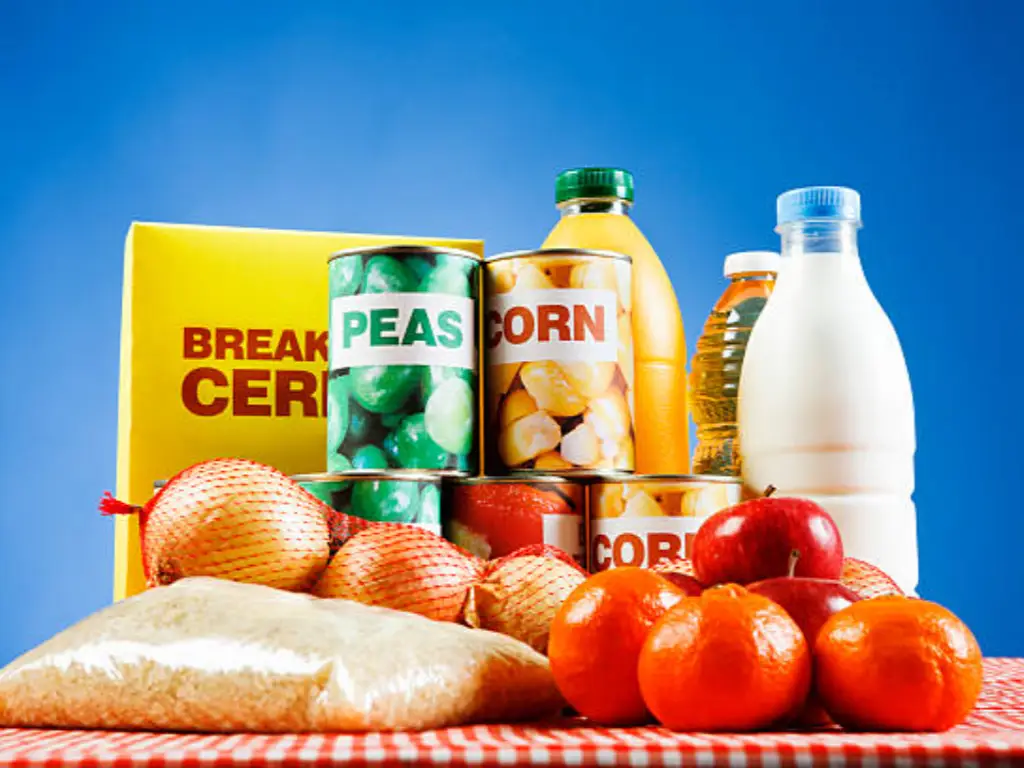Introdution
Have you ever opened an expired snack and found it was stale? Or pulled out a sealed food pouch and saw condensation on the inside? Such instances can be frustrating. From a business perspective, however, such instances can tarnish the reputation of a brand. Most times, the issue is the primary packaging. It is the packaging that prevents food seca, and it is also the intended closing of the protective layering that surrounds a food.
As much as primary packaging provides a layer of food and increases shelf stability, it significantly prevents the contamination of the food. the sucking of it from. over the shelf and quality. It withstands the air, Environmental factors such as moisture, from gaining access and moisture from Frozen goods, dry snacks, and ready-to-eat meals.
It also matters to the customer. Recent studies show that over 70% of consumers say packaging design influences their purchasing decisions. This means that packaging must do a lot of heavy lifting–protect the product, convey critical information, and make a positive first impression. In this article, we will discuss the vital role of primary packaging, analyze types of packaging materials, and illustrate why it is important for product success and current supply chain logistics.
What Is Primary Packaging Material?
Think about any product you get: a juice bottle, a box of cereal, a toothpaste tube, or a snack pouch. The primary packaging is the first layer that holds the product and is the first layer that a customer interacts with. It is also what forms the primary impression of the brand.
Nevertheless, primary packaging does more than just hold the product. Its main purpose is to ensure that the product is kept away. For instance, packaging can keep moisture, oxygen, light, and other elements that can spoil or shorten shelf life away, and can also reduce the risk of physical damage during transit, handling, and display. Primary packaging plays an important role in conveying essential information on the product, such as what it is, how to use it, what’s inside, and the expiration date. It is essential for safety and compliance with regulations.
To understand its role in the different tiers of packaging, it is helpful to look at its relation to other layers:
- ● The primary packaging is the innermost layer and is in direct contact with the product. It includes things like milk bottles, sealed food pouches, and blister packs of pills. It is the first line of defense and main point of contact with the user, and it protects, preserves, and communicates with the product.
- ● The secondary packaging holds and groups multiple primary packagings. It can be a branded carton that holds a few bottles or a box that contains several snack bars. It is embellishing the display for shelves, reinforcing the structure, and helping the marketing purpose.
- ● The tertiary packaging is for bulk handling and transport. This includes things like shrink-wrapped pallets and shipping crates. It is designed to move large amounts of product efficiently through the stages of the supply chain.
Every layer plays a unique role, yet a major one is the primary packaging, which can provide protection, communication, and consumer experience all in one touchpoint that is so important.
Common Types of Primary Packaging Materials
There is no one type of primary packaging. The choice of packaging may alter product stability, price, consumer attraction, and even environmental consequences. Each packaging type fulfills various industry needs. While some provide examples of primary packaging barrier protection, others focus on branding and/or sustainability. Below are some of the most commonly used materials and their attributes.
| Material Type | Unit Cost | Barrier Performance | Durability | Sustainability | Shelf Appeal | Consumer Convenience |
| Glass | High | Excellent | Low (fragile/heavy) | ♻️ 100% recyclable, not biodegradable | High (clear, premium look) | Medium (heavy, non-portable) |
| Metal | Medium to High | Excellent | High | ♻️ Widely recyclable, not biodegradable | Medium (opaque, uniform) | Medium (sturdy, but less ergonomic) |
| Plastic | Low to Medium | Moderate to High (varies by type) | High | ♻️ Partially recyclable, not biodegradable | High (custom shapes/colors) | High (lightweight, easy to open) |
| Paper/Paperboard | Low | Low (needs coating) | Medium | ♻️ Recyclable, biodegradable (if untreated) | High (printable, natural feel) | Medium (easy to carry, less durable) |
| Flexible Pouches | Low to Medium | Moderate (multi-layered) | High | ♻️ Limited recyclability, rarely biodegradable | Medium to High (modern, compact) | High (portable, resealable) |
Glass Containers
Glass is one of the most traditional and reliable materials used to package products. Packaging in glass is ideal for products where purity is essential or shelf life is extended. This includes high-end packaged food or beverages and prescription pharmaceutical products. Glass is also used for products that are trusted by people, since packaged goods are visible through glass.
Glass is also a sustainable packaging choice since it is fully recyclable and reusable. The disadvantages of glass packaging, especially for food and beverages, are the weight and breakability of glass, which can increase shipping costs when compared to other products.
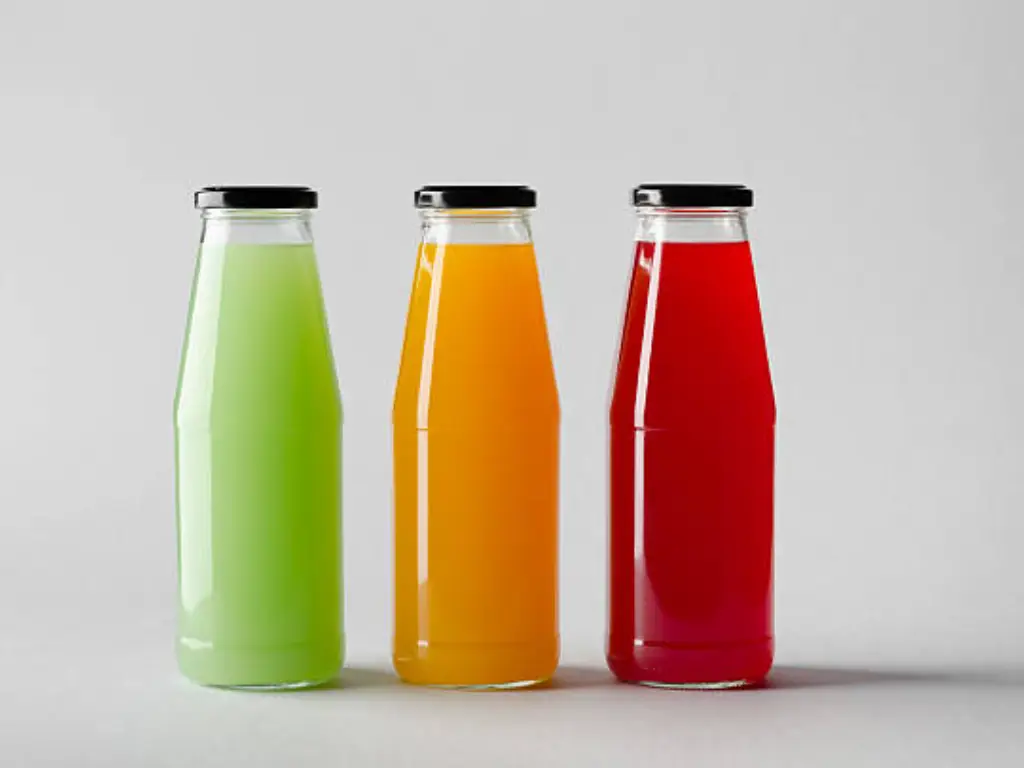
Metal Cans
Metal is used for packaging soft drinks, canned food, and aerosol products. Metal, especially aluminum and tin plate, has exceptional endurance and barrier protection against air and light.
It’s recyclable as well as resistant to damage, which increases its worth in terms of safety and sustainability. Yet, metal’s cons, such as a lack of design versatility and not allowing for visual merchandising, are still factors to consider.
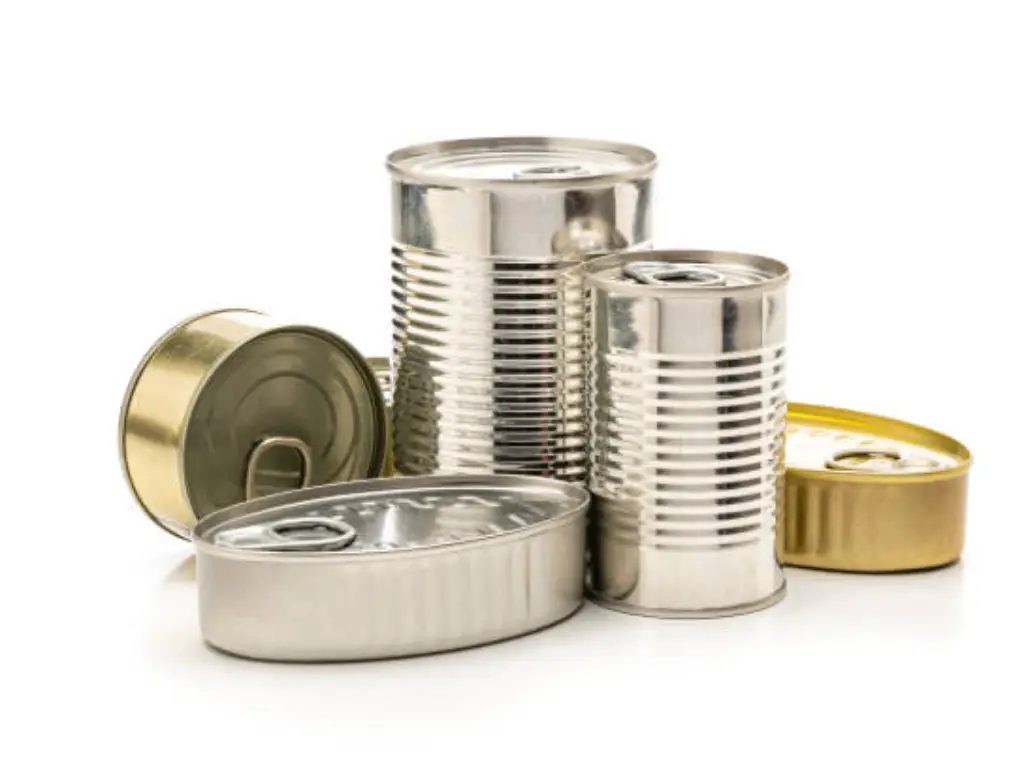
Plastic Containers
Plastic is still the most flexible packaging material. Being light, inexpensive, and easily moldable to almost any configuration makes it a go-to material for many industries. It is used in packaging for cleaning products, snack tubs, medicine bottles, and almost everything else.
Plastics are tailored to fit the needs of the product. Be it PET for drinks, HDPE for household products, and pharmaceuticals. Innovative alternatives such as bioplastics and recyclable blends are more common in response to environmental activism.
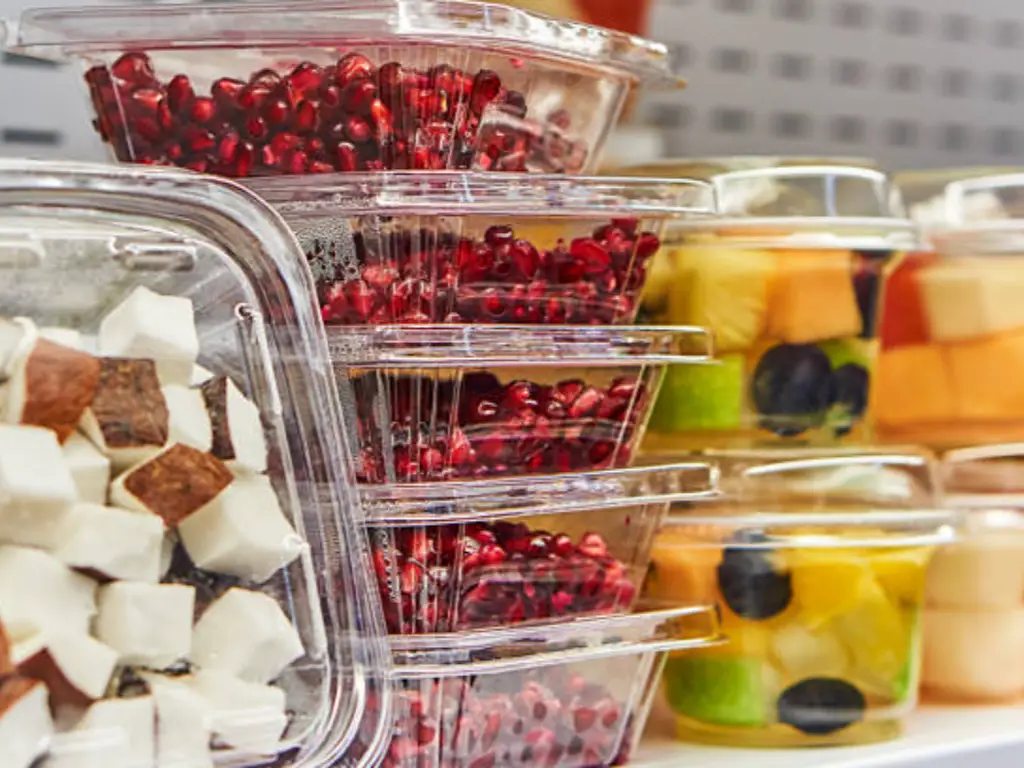
Paper & Paperboard
Paper packaging is mostly used in dry food, bakeries, and personal care products. It is light, printable, and usually seen as environmentally friendly. Above all, paperboard cartons are economical and stackable, thus the most popular in retail.
Paper is not a very effective moisture barrier, though, so it is often used with inner linings or coatings to match the more challenging secondary packaging requirements.
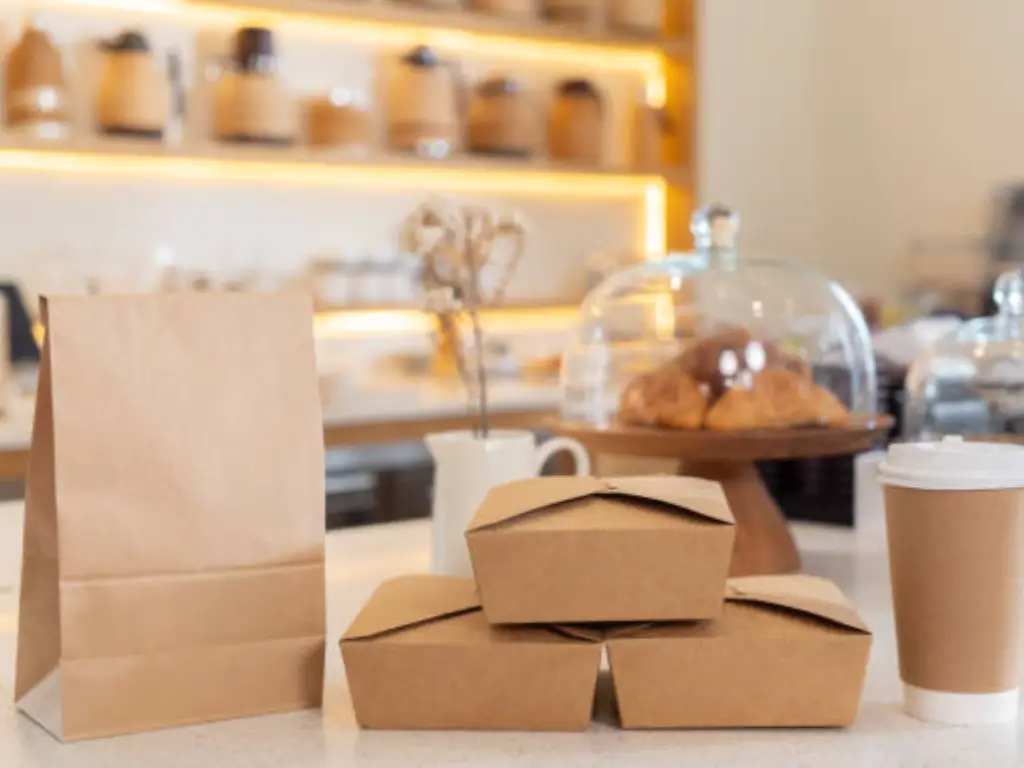
Flexible Pouches
Flexible packaging has grown exponentially due to its functional and efficiency combination. It is light, space-saving, and resealable, which highlights some of the key functions of primary packaging that appeal greatly to both the producers and the consumers.
You can also have flexible pouches applied to a large assortment of food and non-food products, such as:
- ● Stand-up pouches (Doypacks): Snacks, dried fruit, and pet food. They have their own good shelf space and usually contain zippers or spouts.
- ● Flat pouches (Pillow pouches): This is a popular type of packaging used in cases of single-service products, such as sauces, instant noodles, or wet wipes.
- ● Gusseted pouches: It is a type of pack that can be expanded to accommodate a larger volume, and it is commonly applied in packing food products such as coffee, rice, and baked goods.
- ● Spouted pouches: Good when the material is pourable or squeezable, such as juices, baby food, or condiments.
- ● Vacuum pouches: Vacuum pouches are used to pack meat, cheese, and seafood to eliminate air to increase their freshness.
- ● Retort pouches: These are used with ready-to-eat food items that do not need traditional canning to be sterilized.
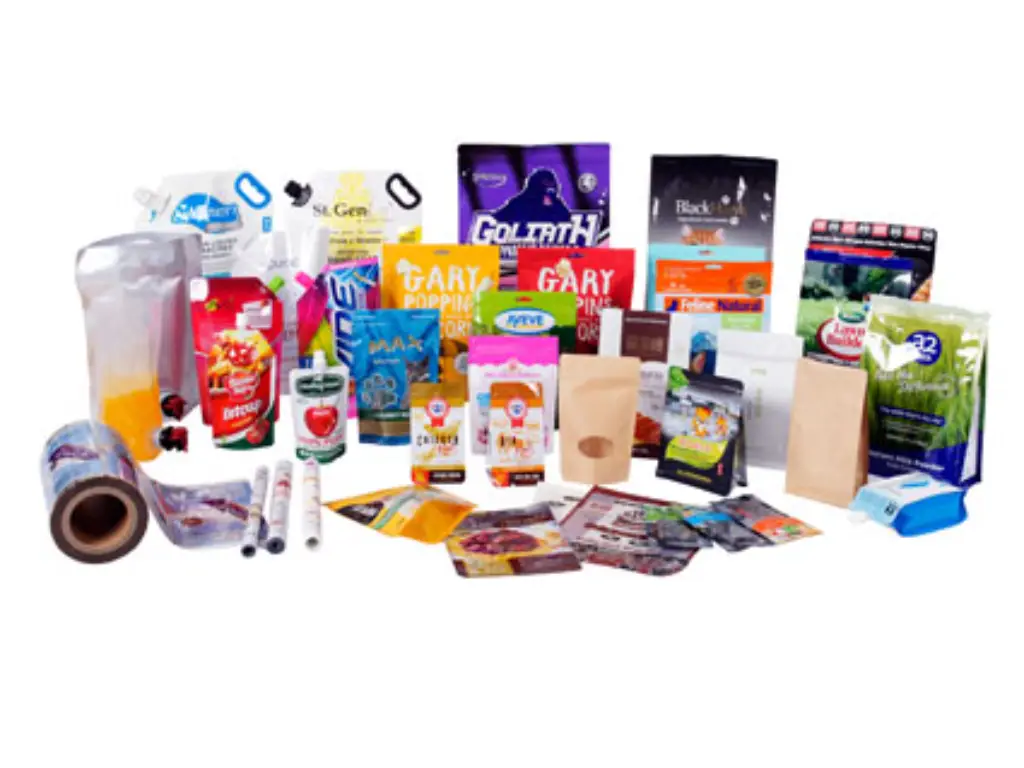
The most remarkable feature about flexible packaging is its flexibility. Not only do flexible formats provide a progressive solution with no impact on performance, but they can be applied in any case, whether it is product integrity, minimizing packaging waste, or optimizing supply chain management.
The Rise of Flexible Packaging in Modern Primary Packaging
Over the past few years, the transition of flexible packaging from a niche choice to one of the most rapidly expanding offerings in primary modern packaging material has been nothing short of remarkable. The movement from rigid formats of packaging, such as glass, metals, and hard plastics, as packaging formats is influenced by consumer requirements, expectations in sustainability, and the pursuit of efficiencies within the entire supply chain. The benefits of flexible packaging are straightforward:
- ● Consumer Convenience: Flexible packaging responds to the requirements of the most modern lifestyles and offers convenience. The lighter, portable formats are easier to carry, store, and dispose of. Resealable closures and other features, such as spouts, offer comfort, ease of use, and product information that enhances the emotional bond between the consumer and the product.
- ● Logistical Efficiency: Flexible packaging, especially pouches, is less cumbersome than rigid packaging. Not only are pouches easier to ship and store, but they also save on shipping and storage space before and after use, as they are flat roll stock. The reduced weight of the packaging and the saved space in shipping improve efficiency in the entire supply chain, and decrease carbon emissions and overall costs for companies in the mass shipping of products.
- ● Design Flexibility: The entire surface of a pouch can be used for branding. The ability to print high-quality graphics, incorporate storytelling, and add transparent windows and custom shapes to enhance shelf appeal and visibility are innovative design features. These additions comply with design regulations and highlight shelf appeal.
- ● Performance and Protection: Packaging levels and their multilayer construction comprise different materials to meet specific barrier needs. The combination of layers, which includes aluminum for barrier protection, PET to add strength, and PE for sealing, ensures that the product stays intact and shelf-stable for a long time despite challenging external conditions.
- ● Sustainability Advantage: Current. The lightweight nature of packaging reduces waste, the lightweight nature of packaging materials reduces emissions during transport, and the use of thinner laminates, recyclable films, and transition bio-based materials improves environmental sustainability. The lightweight nature of packaging meets packaging systems’ sustainability initiatives.
Food, beverages, pharmaceuticals, cosmetics, and household goods are some of the industries seeing an increased use of this type of packaging. This type of packaging provides protection and flexibility and is aesthetically pleasing, which is why it is used in primary packaging.
Partner with Baishen Pack for Smarter Flexible Packaging
Speed, precision, and flexibility are modern packaging world differentiators. Helmed by fully integrated production with advanced digital printing technology, Baishen Pack provides brands with the true competitiveness of full agility.
With our HP Indigo and traditional flexographic lines, digital printing guarantees the same professional finish for both small and large runs and reduces lead time, making design changes, and keeping color consistency and branding across all batches. To control quality, reliability, and efficiency, all elements of the packaging process are completed in-house, including lamination, slitting, and pouch making.
Performance defines every piece—from high-barrier films and freshness safeguarding to resealable films and user-friendly packaging. Global food-grade compliance and safety of SGS, ISO, and BRC certified materials is standards-proven. Brands can responsibly lessen their eco footprint with our sustainable films.
Premium and custom digital printing, which elevates brand, is available for coffee, pet food, nutritional products, and pouch packaging. To learn more, contact us.
How to Choose the Right Primary Packaging Material
Choosing a primary packaging option is a decision that needs a balance between a technical approach and a strategic one. The cost of packaging affects a product’s performance, transportation, and user interaction. Effective packaging safeguards the contents, complies with regulations, protects the contents safely and conveniently, and facilitates the entire production and distribution process. To select the ideal option, a few critical factors that influence the packaging’s performance throughout the product’s life cycle must be considered.
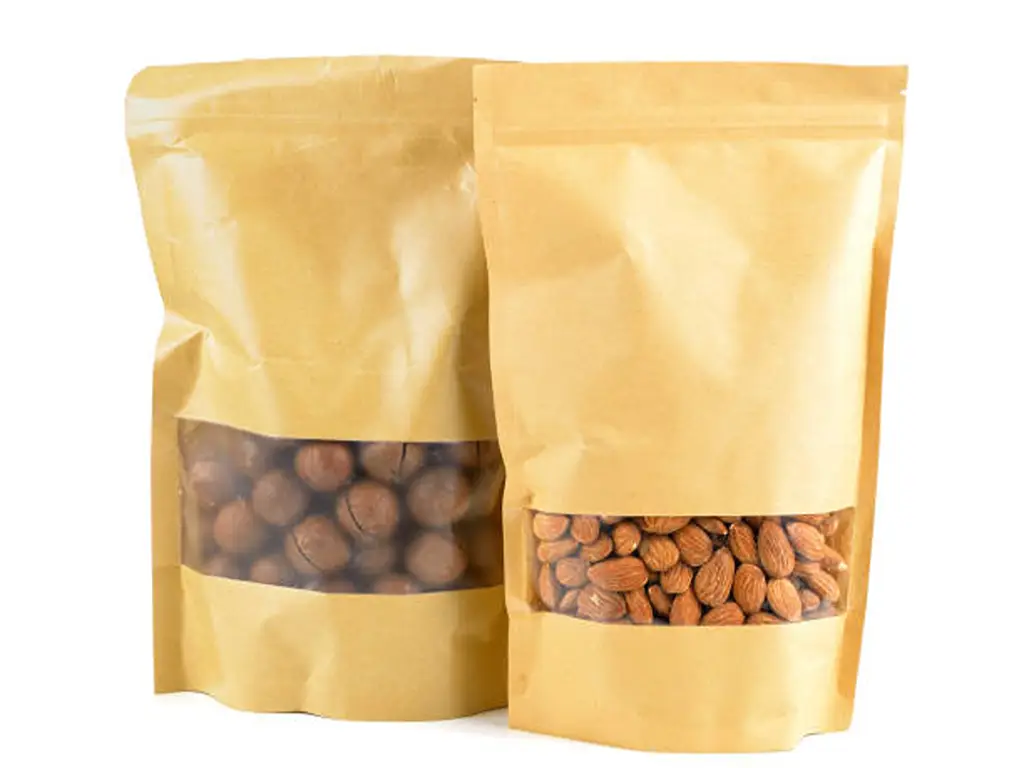
- ● Start with the Product’s Needs
Determine what the product is most sensitive to, whether it be moisture, oxygen, heat, light, or microorganisms. Relevant factors can vary significantly and be especially true with fragile products like pharmaceuticals and fresh foods that require special packaging. Knowing the product’s most sensitive factors will allow you to select the most appropriate packaging materials that preserve the product’s integrity for longer periods and eliminate unnecessary complexity.
- ● Think About the Journey
Before reaching the end user, products will move through factories, distribution centers, trucks, and retail locations. At these locations, packaging is subjected to stacking, vibration, pressure, and various forms of manipulation. If your product is to be transported in large consignments over long distances, the packaging materials must provide sufficient protective durability to maintain product integrity and quality until the destination.
- ● Meet Regulatory Standards
Certain industries, like food and healthcare, require non-negotiable compliance. Packaging must meet appropriate safety and labeling standards as required by the FDA or the EMA. Packaging must also comply with the required labeling elements, which include ingredient, warning, and expiration date. Consumer compliance standards build trust and protect the brand.
- ● Make It Easy to Use
Life should be made easier by packaging, not more difficult; whether there is a resealable zip, an easy-pour spout, or a simple tear notch, convenience is important. There is great satisfaction when a consumer can easily open, close, and store a product. The consumer’s perception of the brand also strengthens with convenience, leaving a good impression of the overall experience.
- ● Don’t Overlook Sustainability
Today’s consumers expect the environmental impact of packaging to be positive. If your brand espouses a culture of sustainability, or your brand operates in a market where eco-friendly choices are commonplace, responsible use of packing materials like recyclable, compostable, or lightweight materials that lessen waste is important. Thoughtful and strategic choices with packaging materials are likely to enhance your brand and positively impact your carbon footprint.
- ● Think Beyond the First Layer
Consider all layers of packaging. For example, primary packaging is most effective when it integrates fully into a system of secondary packaging, like boxes or trays, and tertiary packaging is used for transport and storage. Harmonization of packaging materials across all levels eases the functionality of operations and improves the management of the supply chain.
The Future: Innovations in Packaging Materials
With industries worldwide focusing on sustainability, the demand for thoughtful, clean, and efficient primary packaging materials is at an all-time high. We are on the quest for packaging that protects the product and the planet. New and transformative technologies in the packaging materials industry allow for the responsible design of packaging and for new ways to source, use, and recover materials.
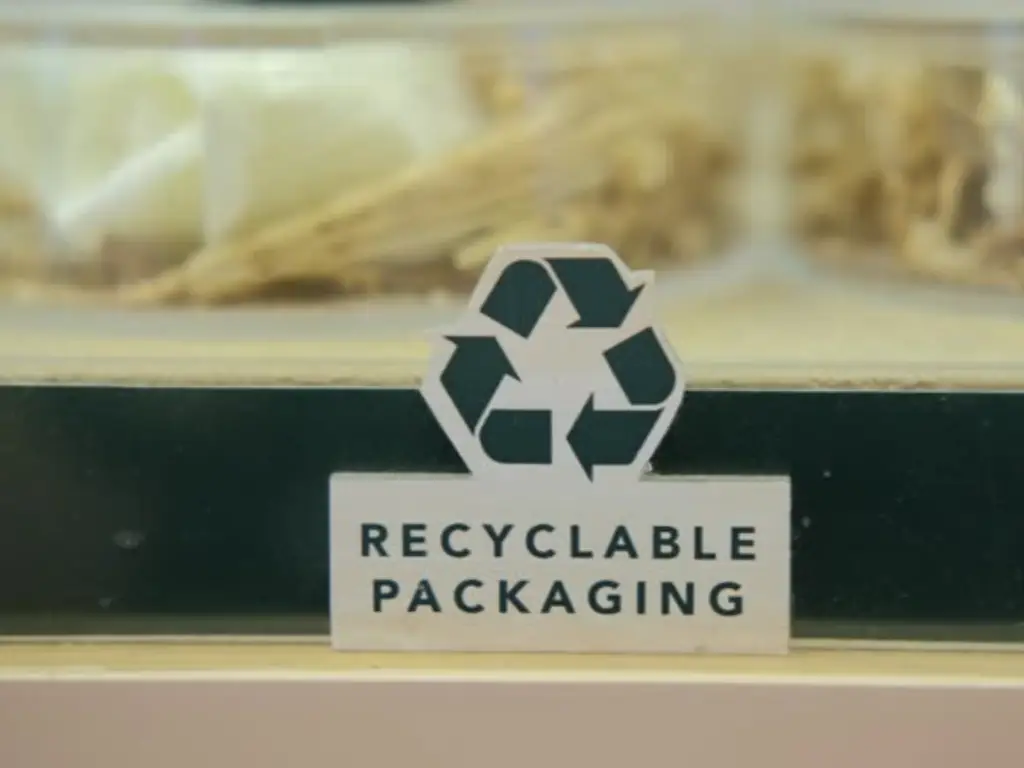
- ● Sustainable packaging materials such as PLA and PHA Bioplastics are made from corn starch and microbial fermentation, and are made to reduce reliance on fossil fuels. These bioplastics are strong and flexible, and use less carbon than traditional plastics. Some compostable bioplastics serve food, and provide closed-loop packaging for pharmaceuticals, and compostable food packaging.
- ● Active packaging is designed to interact with the product environment for which it is intended. It includes oxygen scavengers, antimicrobials, and moisture control layers. This technology is used to advance packaging used on perishable goods, fragile items, and in the healthcare industry. It helps reduce waste, especially in items that are more susceptible to spoilage and waste.
- ● Edible Coatings: A new approach to maintaining the quality of fresh produce is the use of edible coatings. It uses natural polymers to produce a thin, invisible layer that slows down oxidation and loss of moisture. This “packaging you can eat” is the epitome of waste reduction, prolonging the shelf life of fruits and vegetables, and saving costs. It offers both product protection and environmental sustainability.
- ● Mono-Material Structures: Multi-layer laminates that are difficult to recycle have been a major hassle in the world of recycling. The new generation of mono-material flexible packaging, for example, all-polypropylene or all-polyethylene pouches, solves this problem. These structures adequately maintain the required barrier performance for a prolonged shelf life and are fully recyclable within the active waste streams. This packaging is the perfect example of modern sustainable engineering.
Both innovations deal with the waste stream and cutting-edge engineering. The future of packaging and the material’s evolution lies in the integration of performance, predictability, and safety for the end user. The materials will balance regulation, cost, and the waste stream on every level of packaging, and the packaging will provide peace of mind as the product is passed from hand to hand.
Conclusion
Primary packaging material is the innermost layer of the packaging. Yet it carries the outermost responsibility. It protects the product, minimizes the risk of damage, shapes consumer perceptions, supports brand identity, and fulfills critical logistical and legal roles.
Whether it’s made of glass, a metal can, a pouch, or paper, the primary packaging says something about the product and the brand. Choosing the right packaging type will avoid spoilage and customer complaints. Get it right, and you are set for the long-term success of the brand.
Knowing the functions and purpose of primary packaging, knowing the trends, and soliciting the advice of experts will enable you to make strategic and informed decisions. Details are important in the world of packaging. Primary packaging is where it all begins.
